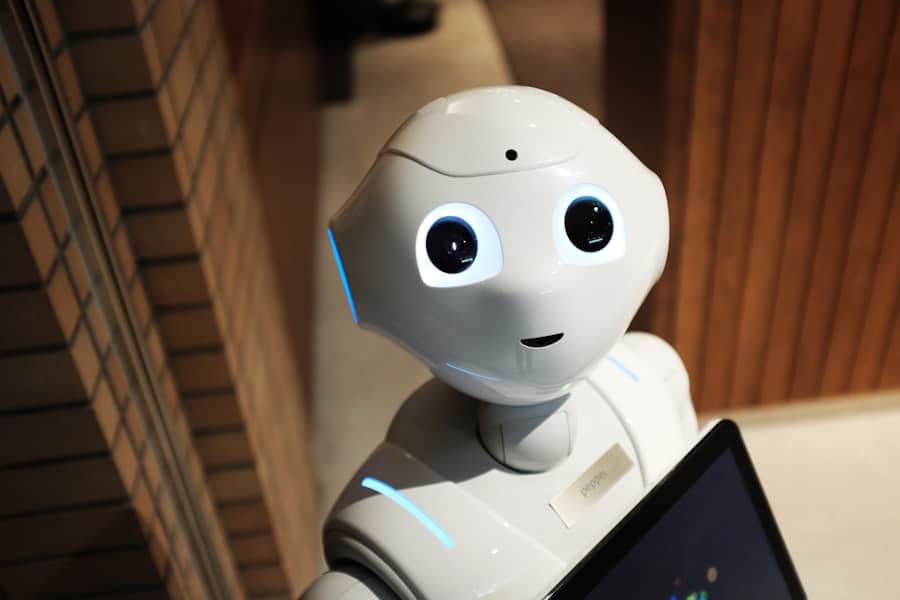Customer churn, often referred to as customer attrition, is a critical metric for businesses across various industries. It represents the percentage of customers who discontinue their relationship with a company over a specific period. Understanding and managing churn is vital for maintaining a healthy customer base and ensuring long-term profitability.
High churn rates can indicate underlying issues such as poor customer service, lack of engagement, or inadequate product offerings. For many companies, especially those in subscription-based models, retaining existing customers is often more cost-effective than acquiring new ones.
When customers leave, they often take their lifetime value with them, which can significantly impact revenue projections and growth strategies. Moreover, the reasons behind churn can vary widely, from dissatisfaction with the product to better offers from competitors. Therefore, businesses must not only track churn rates but also delve deeper into the factors contributing to customer attrition.
This understanding is essential for developing effective retention strategies that can enhance customer loyalty and satisfaction.
Key Takeaways
- Customer churn refers to the phenomenon of customers ceasing their relationship with a company, and it is a critical concern for businesses across industries.
- Machine learning involves the use of algorithms and statistical models to enable computers to improve their performance on a specific task through experience.
- Predicting customer churn is important for businesses as it helps in understanding customer behavior, identifying at-risk customers, and implementing strategies to retain them.
- Machine learning can predict customer churn by analyzing historical data, identifying patterns, and creating predictive models to forecast future churn.
- Key factors in predicting customer churn include customer demographics, purchase behavior, customer interactions, and customer satisfaction scores.
Understanding Machine Learning
Machine learning (ML) is a subset of artificial intelligence that focuses on the development of algorithms that allow computers to learn from and make predictions based on data. Unlike traditional programming, where explicit instructions are provided for every task, machine learning enables systems to identify patterns and make decisions with minimal human intervention. This capability is particularly valuable in scenarios where large volumes of data are involved, as it allows for the extraction of insights that would be impractical or impossible to obtain through manual analysis.
At its core, machine learning involves training models on historical data so that they can recognize patterns and make predictions about future events. These models can be supervised, unsupervised, or semi-supervised, depending on the nature of the data and the specific application. In supervised learning, for instance, the model is trained on labeled data, where the outcomes are known, allowing it to learn the relationship between input features and target outcomes.
Unsupervised learning, on the other hand, deals with unlabeled data and focuses on identifying inherent structures within the data. This flexibility makes machine learning a powerful tool for various applications, including customer churn prediction.
The Importance of Predicting Customer Churn

Predicting customer churn is crucial for businesses aiming to enhance customer retention and optimize their marketing strategies. By accurately forecasting which customers are likely to leave, companies can proactively address issues that may lead to attrition. This predictive capability allows organizations to tailor their engagement efforts, offering personalized incentives or interventions designed to retain at-risk customers.
For instance, a telecommunications company might identify customers who frequently complain about service quality and offer them discounts or improved service plans to encourage them to stay. Moreover, understanding churn patterns can provide valuable insights into customer behavior and preferences. By analyzing the characteristics of customers who churn versus those who remain loyal, businesses can identify trends and commonalities that inform product development and service enhancements.
This knowledge not only aids in retention efforts but also helps in refining marketing strategies to attract new customers who align more closely with the company’s offerings. In an increasingly competitive marketplace, the ability to predict and mitigate churn can be a significant differentiator for businesses seeking sustainable growth.
How Machine Learning Can Predict Customer Churn
Machine learning offers sophisticated techniques for predicting customer churn by leveraging vast amounts of data generated through customer interactions. By employing algorithms that analyze historical data—such as transaction history, customer demographics, and engagement metrics—businesses can develop predictive models that identify customers at risk of leaving. These models can incorporate various data sources, including CRM systems, social media interactions, and customer feedback surveys, providing a comprehensive view of customer behavior.
One common approach in churn prediction is logistic regression, which estimates the probability of a customer churning based on various input features. More advanced techniques include decision trees and ensemble methods like random forests or gradient boosting machines, which can capture complex relationships within the data. Neural networks are also gaining traction in this domain due to their ability to model intricate patterns in large datasets.
By continuously refining these models with new data, businesses can improve their predictive accuracy over time, enabling them to respond more effectively to changing customer dynamics.
Key Factors in Predicting Customer Churn
Several key factors influence customer churn predictions, and understanding these variables is essential for building effective predictive models. Customer engagement metrics are among the most significant indicators; frequent interactions with a brand—whether through purchases, customer service inquiries, or social media engagement—often correlate with higher retention rates. Conversely, a decline in engagement may signal potential churn.
Another critical factor is customer satisfaction, which can be gauged through surveys or Net Promoter Scores (NPS). Customers who express dissatisfaction are more likely to leave, making it imperative for businesses to monitor sentiment closely. Additionally, demographic factors such as age, location, and income level can provide insights into churn tendencies; for example, younger customers may have different expectations compared to older generations.
Finally, external factors such as market competition and economic conditions can also play a role in influencing customer decisions to stay or leave.
Implementing Machine Learning for Customer Churn Prediction

Implementing machine learning for customer churn prediction involves several key steps that require careful planning and execution. The first step is data collection; organizations must gather relevant data from various sources to create a comprehensive dataset for analysis. This may include transactional data, customer demographics, interaction logs, and feedback from surveys.
Ensuring data quality is paramount; incomplete or inaccurate data can lead to misleading predictions. Once the data is collected and cleaned, the next step is feature engineering—transforming raw data into meaningful features that can enhance model performance. This process may involve creating new variables that capture customer behavior patterns or aggregating data over specific time frames to identify trends.
After feature selection and engineering are complete, businesses can proceed to model training using appropriate machine learning algorithms. It’s essential to split the dataset into training and testing subsets to evaluate model performance accurately. After training the model, organizations should continuously monitor its performance against real-world outcomes.
This iterative process allows for ongoing refinement of the model based on new data and changing customer behaviors. Additionally, integrating the predictive model into existing business processes—such as marketing campaigns or customer service protocols—ensures that insights derived from churn predictions are actionable and lead to tangible improvements in retention strategies.
Benefits of Using Machine Learning for Customer Churn Prediction
The adoption of machine learning for predicting customer churn offers numerous benefits that can significantly enhance a company’s operational efficiency and profitability. One of the primary advantages is the ability to make data-driven decisions based on predictive insights rather than relying solely on intuition or historical trends. This shift towards evidence-based strategies allows businesses to allocate resources more effectively by targeting interventions at customers most likely to churn.
Furthermore, machine learning models can process vast amounts of data quickly and accurately, enabling real-time analysis of customer behavior. This capability allows companies to respond promptly to emerging trends or issues that may lead to increased churn rates. For instance, if a sudden spike in complaints is detected through sentiment analysis of social media posts or customer reviews, businesses can take immediate action to address these concerns before they escalate into widespread attrition.
By understanding the factors that contribute to churn for specific segments of their customer base, companies can design targeted retention campaigns that resonate more effectively with at-risk customers. This level of personalization not only enhances customer satisfaction but also fosters loyalty by demonstrating that the company values its customers’ needs.
Conclusion and Future of Customer Churn Prediction with Machine Learning
As businesses continue to navigate an increasingly competitive landscape, the importance of accurately predicting customer churn cannot be overstated. The integration of machine learning into this process represents a transformative shift in how organizations approach customer retention strategies. With advancements in technology and data analytics capabilities, companies are better equipped than ever to harness the power of machine learning for predictive insights.
Looking ahead, the future of customer churn prediction will likely see even greater sophistication in modeling techniques and data integration methods. As artificial intelligence continues to evolve, we can expect more robust algorithms capable of capturing complex patterns in customer behavior across diverse industries. Additionally, as businesses increasingly adopt omnichannel approaches—interacting with customers across multiple platforms—the ability to analyze cross-channel data will become essential for understanding churn dynamics comprehensively.
Moreover, ethical considerations surrounding data privacy will play a crucial role in shaping how companies implement machine learning solutions for churn prediction. Striking a balance between leveraging customer data for predictive insights while respecting privacy concerns will be paramount in maintaining trust and fostering long-term relationships with customers. As organizations embrace these challenges and opportunities, machine learning will undoubtedly remain at the forefront of efforts to predict and mitigate customer churn effectively.
If you are interested in exploring the potential of machine learning in the realm of customer behavior prediction, you may also want to check out this article on the best niche for affiliate marketing in TikTok. Understanding customer churn is crucial for businesses looking to retain their customer base and maximize profitability, and leveraging machine learning algorithms can provide valuable insights into predicting and preventing churn. By delving into the world of affiliate marketing on TikTok, you can further enhance your understanding of consumer behavior and preferences in the digital age.
FAQs
What is customer churn?
Customer churn refers to the phenomenon of customers ceasing their relationship with a company, whether by canceling a subscription, not renewing a contract, or simply not making a repeat purchase.
What is machine learning?
Machine learning is a subset of artificial intelligence that involves the use of algorithms and statistical models to enable computers to improve their performance on a specific task without being explicitly programmed.
How can machine learning predict customer churn?
Machine learning can predict customer churn by analyzing historical data on customer behavior, such as purchase frequency, customer service interactions, and usage patterns, to identify patterns and indicators that are predictive of future churn.
What are the benefits of using machine learning to predict customer churn?
Using machine learning to predict customer churn can help businesses proactively identify at-risk customers, tailor retention strategies to specific customer segments, and ultimately reduce customer churn and increase customer lifetime value.
What are some common machine learning algorithms used to predict customer churn?
Common machine learning algorithms used to predict customer churn include logistic regression, decision trees, random forests, support vector machines, and neural networks.
What are some challenges of using machine learning to predict customer churn?
Challenges of using machine learning to predict customer churn include the need for high-quality and comprehensive data, the potential for biased or inaccurate predictions, and the requirement for ongoing model maintenance and validation.

